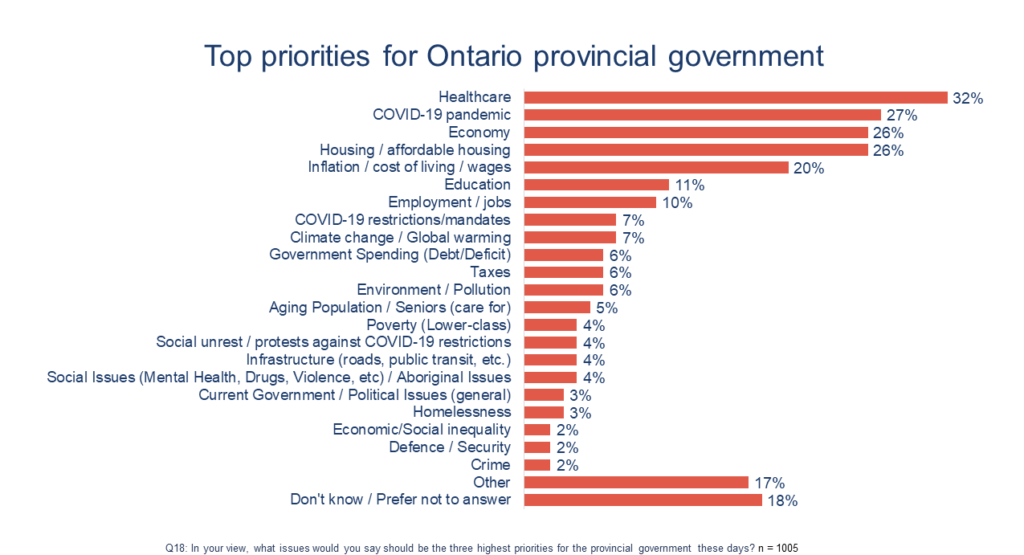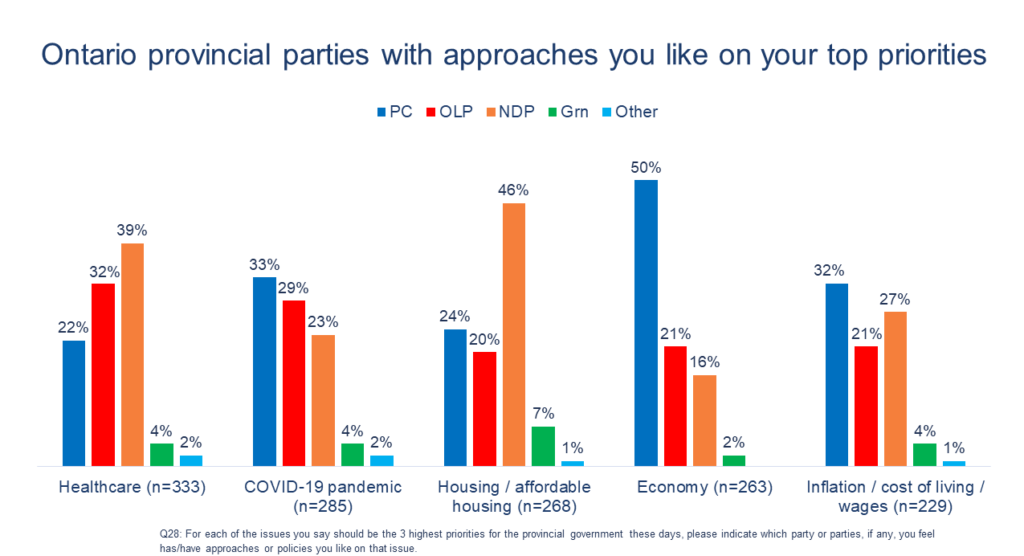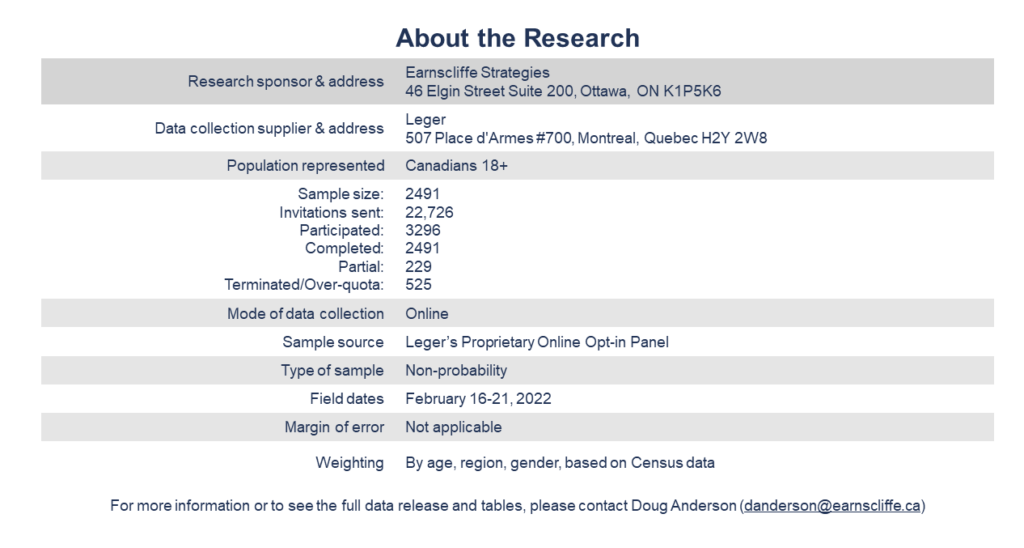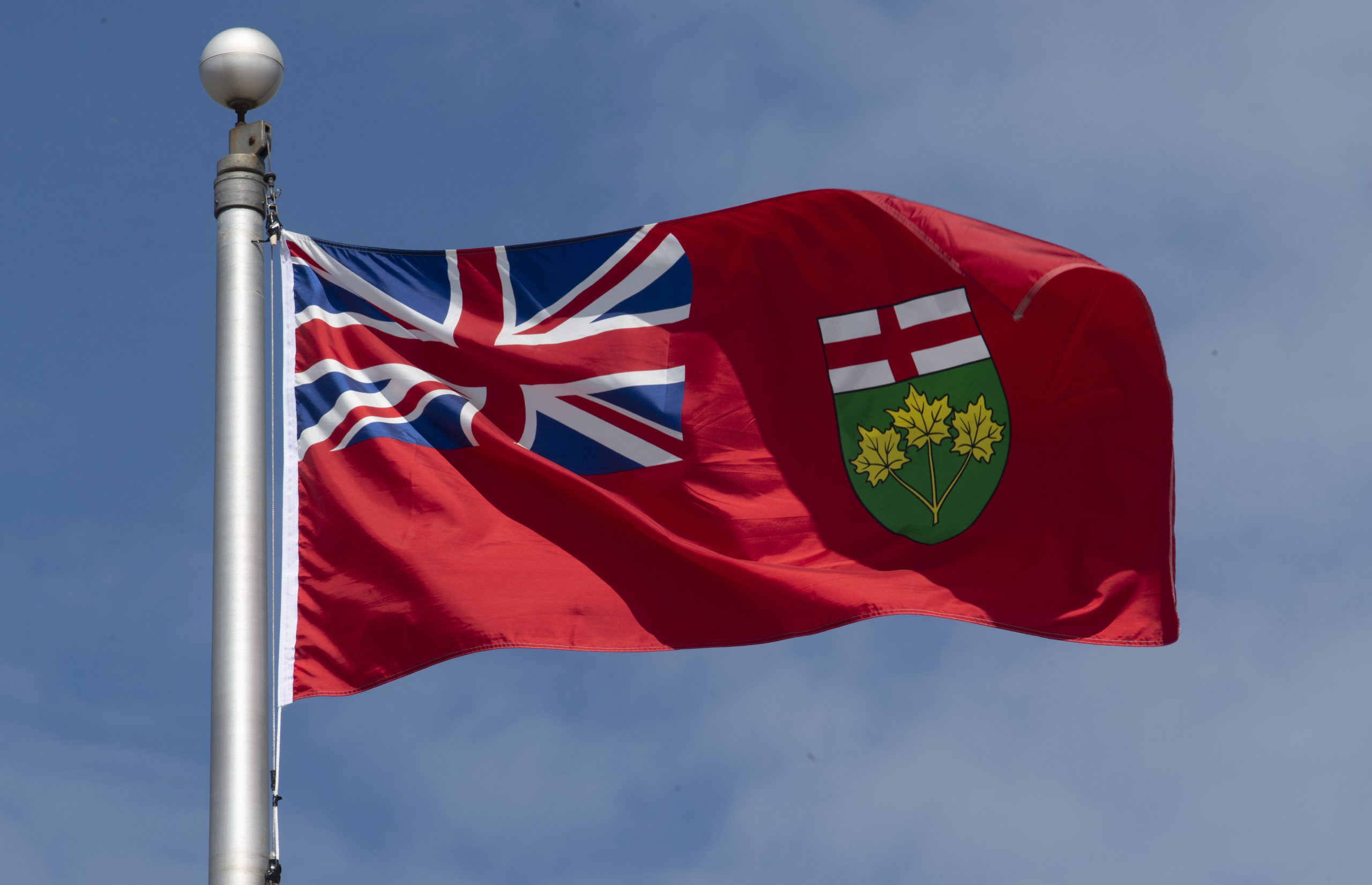Photo: THE CANADIAN PRESS/Adrian Wyld
Written by Hilary Martin
What Ontario voters will be listening for ahead of the provincial election and whose policies they like.
In February 2022, we asked 1,005 Ontarians to tell us what they believe should be the top three priorities for their provincial government. At the time, the top five priorities were healthcare (32%), the COVID-19 pandemic (27%), the economy (26%), housing (26%) and inflation/cost of living (20%). The order of these priorities may have shifted over the past few months, but even in the current context it’s reasonable to assume that each will still be weighing on the minds of voters as the provincial election approaches.

As Ontarians consider which party’s candidate will earn their vote on June 2, we were curious to investigate perceptions of each party’s performance on these top issues. For each priority respondents selected, we asked them which Ontario provincial parties have approaches on that policy area that they like. Research often forces voters into declaring which one party is best on one issue or another and while that can be valuable to know, it also tends to be both highly correlated with current vote intention (people who feel supportive of a particular party tend to say that party is the best on everything) and hides the possibility that more than one party may be seen as having reasonable approaches on an issues – meaning that there is less of an electoral advantage for a party to leverage.

On healthcare, a perennial issue in provincial elections, the Ontario New Democratic Party (NDP) have an edge over the Ontario Liberals (39% vs 32%) while the Progressive Conservatives (PC) trail at 22%. When it comes to COVID-19, however, the PCs lead slightly at 33%, followed by the Liberals (29%) and then the NDP (23%). Though the pandemic has laid bare the weaknesses of the provincial health care system, it would appear that voters who prioritize COVID-19 response are more generous to the current government than those concerned about health care. The distinction is an important one for the opposition parties – health care is a weakness for the PCs, pandemic response less so, though of course this could shift as the pandemic evolves.
As the cost of housing continues to be a hot topic of conversation across the province, it’s not surprising that it’s among the electorate’s top five provincial priorities. Almost half (46%) of the voters who prioritize housing say that the NDP has housing policies that they like. Less than a quarter select the PCs (24%) or the Liberals (20%). With our own polling, as well as many others, showing a tight race between the Liberals and NDP for second place, the NDP’s lead on this issue presents an opportunity to set themselves apart on a pressing concern for Ontarians.
The PCs hold a commanding lead among those who prioritize the economy – half of these respondents say they like the PC’s economic policies. In contrast, just 21% like the Liberals’ economic policies and 16% the NDP’s. The economy, the third most commonly identified priority for the provincial government, is a clear weak spot for both opposition parties.
When it comes to the issue of inflation and cost of living, the PCs have a slight lead, with 32% who prioritize this issue saying they believe the party has good policies to deal with it. However, the NDP are not far behind at 27%, followed by the Liberals at 21%. It’s quite possible this issue will grow in importance as the election draws closer. Unlike their dominance on the economy, the PCs’ lead on this issue is not insurmountable, and it’s likely that the party that can clearly demonstrate how they will make life more affordable for Ontarians stands to gain.
In the coming weeks, each party has its work cut out: The PCs lead in the polls but may be vulnerable on certain files, such as health care. Meanwhile, the NDP and Liberals will try to break the deadlock between themselves in the popular vote. The NDP seem to be able to differentiate themselves on housing and to a certain extent, health care. The Liberals, trailing on both, may struggle to regain some of the voters they lost to the NDP in 2018. Finally, there’s an opportunity for each party to show Ontarians how they will cushion the impact of the rising cost of living, in a world that looks much different than it did in 2018. The appetite for solutions, or at least approaches that reduce household economic anxieties, suggest this is a policy area to which voters will be paying close attention going forward.
Methodology
This survey was sponsored, designed and analyzed by Earnscliffe Strategies and the field work was conducted by Leger. The survey was conducted with 2,491 individuals from across Canada, including an oversample of 1,005 Ontarians, between February 16-21, 2022. The data was weighted to be reflective of the Canadian population by age, region, and gender based on Census data. Since this survey was conducted using an online panel, no margin of error may be calculated.
Earnscliffe follows the CRIC Public Opinion Research Standards and Disclosure Requirements that can be found here: https://canadianresearchinsightscouncil.ca/standards/
View the survey questionnaire | Download the full data tables

